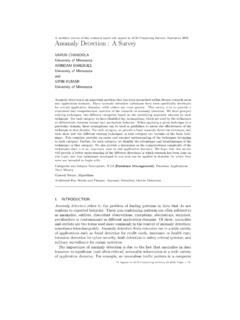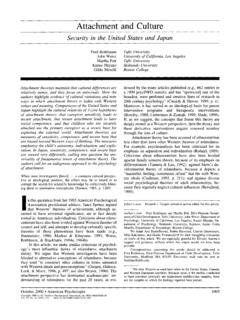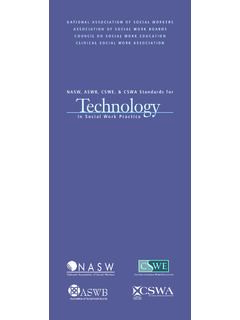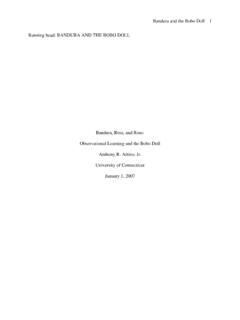Transcription of Child Trauma Screening Questionnaire (CTSQ)
1 Dear Colleague, Thank you for your interest in the Child Trauma Screening Questionnaire (CTSQ). The screen used in this study was adapted from the 10-item Trauma Screening Questionnaire (TSQ).14 This screen was chosen because Brewin (Brewin CR, Rose S, Andrews B, et al . Brief Screening instrument for post-traumatic stress disorder. Br J Psychiatry. 2002;181; 158 162) found that the screen was an excellent predictor of PTSD in adult survivors of a rail crash (sensitivity: ; specificity: ; PPV: ; NPV: ; overall efficiency: ). The Child version of the TSQ, the CTSQ was adapted for this study by rewording the questions to make them more comprehensible for children.
2 The screen was given to a pilot sample to test for comprehension, and no problems were identified. The CTSQ assesses for reexperiencing (5 items) and hyperarousal symptoms (5 items). The response format requires participants to respond with yes (scored 1) or no (scored 0) to whether they have experienced the symptoms since the event. Avoidance items were not incorporated in the CTSQ, because avoidance items (ie, amnesia and foreshortened future symptoms) are not easily comprehended by children in the acute post- Trauma timeframe. Reliability analysis for the CTSQ revealed the item-total correlations for each of the items ranged from.
3 14 to .50, and the internal consistency was acceptable ( = .69). Using ROC analyses an optimal cutting score of 5+ was derived as providing the best prediction of later PTSD. Performance of the CTSQ in Predicting PTSD 1 and 6 Months After Trauma CTSQ Result Diagnostic Result 1 Month 6 Months Negative Positive Negative Positive Negative, N (%) 91 ( ) 2 ( ) 85 ( ) 2 ( ) Positive, N (%) 31 ( ) 11 ( ) 30 ( ) 9 ( ) Value (95% confidence interval) Sensitivity ( ) ( ) Specificity ( ) ( ) PPV ( ) ( ) NPV ( ) ( ) Overall efficiency ( ) ( ) The instrument has also been used as a concurrent Screening tool with children and has demonstrated excellent case-finding properties.
4 Charuvastr, A., Goldfarb, E., Petkova E. & Cloitre, M. (2010) Implementation of a Screen and Treat Program for Child Posttraumatic Stress Disorder in a School Setting After a School Suicide. Journal of Traumatic Stress, Vol. 23, No. 4, pp. 500 503 If you wish to use the instrument for research it is highly desirable that you forward a copy of your results to me, as this will allow me to build a database on the performance of the Child Trauma Screening instrument. If you use the instrument in any publication, I ask that you cite it thus: Kenardy, J., Spence, S., & Macleod, A. (2006). Screening for risk of Persistent Posttraumatic Morbidity in children following traumatic injury.
5 Pediatrics, 118, 1002-1009. While the instrument is freely available as it is also copyright, I ask that you let me know of your intended use. If you have any questions please contact me: Justin Kenardy, PhD Centre of National Research on Disability and Rehabilitation Medicine Edith Cavell Building, Royal Brisbane and Women s Hospital University of Queensland Herston QLD 4029 Australia Or email: Please indicate whether any of these things have happened to you since the accident. 1. Do you have lots of thoughts or memories about the accident that you don t want to have? Yes No 2. Do you have bad dreams about the accident?
6 Yes No 3. Do you feel or act as if the accident is about to happen again? Yes No 4. Do you have bodily reactions (such as a fast-beating heart, stomach churning, sweating and feeling dizzy) when reminded of the accident? Yes No 5. Do you have trouble falling or staying asleep? Yes No 6. Do you feel grumpy or lose your temper? Yes No 7. Do you feel upset by reminders of the accident? Yes No 8. Do you have a hard time paying attention? Yes No 9. Are you on the look-out for possible dangerous things that might happen to yourself and others? Yes No 10. When things happen by surprise or all of a sudden, does it make you jump ?
7 Yes No 2006 This work is copyright and not for reproduction in any format. Please obtain permission to reproduce this from Justin Kenardy




